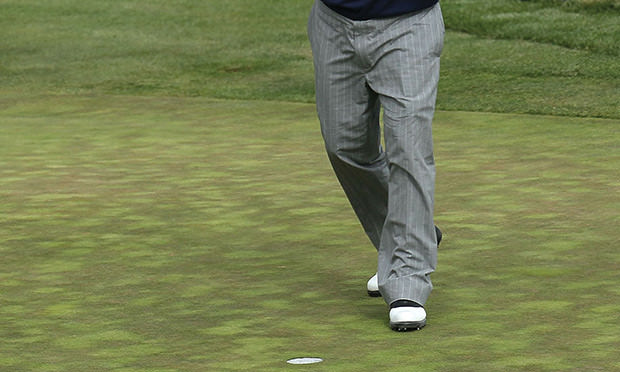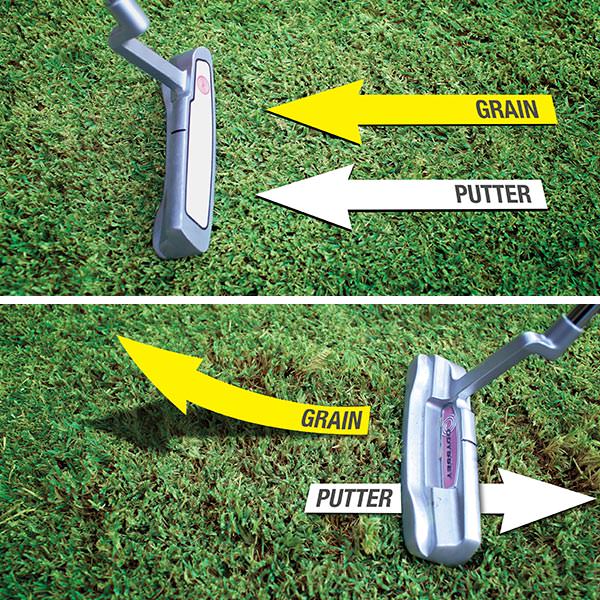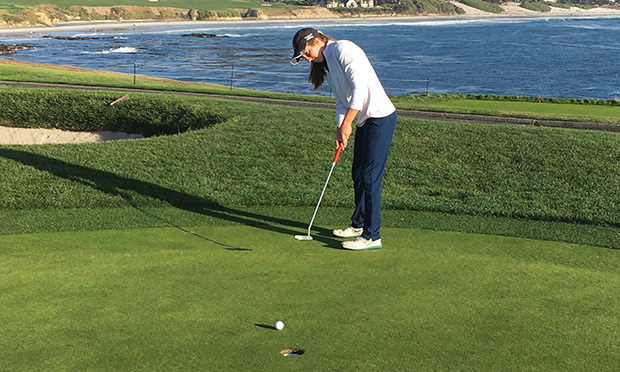Blades of Worry – Turf Tips for the Traveling Golfer

By Jon Rizzi
If you’re an avid Colorado golfer, chances are you’re as familiar with bentgrass as you are with your own carpet. You know how it reacts, know how it holds approaches, and the general speed and break from course-to-course. That’s all fine and good when playing at a mile high— but look outside, winter is here and that means golf travel! So, if you find yourself in warmer weather this winter, say in California or Arizona, we have a few tips to help you dominate the putting surface.
BONE UP ON BERMUDA
Whereas bentgrass carpets the greens on most Colorado courses, Bermuda grass blankets the majority of putting surfaces in warm-weather climates. “It’s more than an aesthetic difference,” says LPGA Professional Elena King of Denver. “Bermuda differs from bent chiefly in that thicker blades and the grain—the direction in which the grass grows—dramatically affects the speed and break of putts.”
GET THE GRAIN
To determine the direction of the grain on Bermuda grass, King advises asking the following questions:
- Which way is west? Bermuda grows parallel to the ground, towards the setting sun.
- Is the green shiny or dull? Shiny is with the grain; dull, against it.
- What does the cup look like? One side will be brownish and worn; the other will have a healthy green tint with blades growing over the cup, showing the direction of the grain, typically toward the sun, water or ocean.
- What’s the rub? Scrape some grass on the fringe (not the putting surface, which breaches rule 35-1f). If the blades brush up, you’re against the grain, if they lay down, you’re with the grain.

PUTT WITH PURPOSE
To negotiate Bermuda greens, King recommends:
- Stroke the ball 20 percent harder going against the grain and 20 percent softer with it. The grain can even pull the ball on an uphill putt.
- Play more break than you normally would on bentgrass.
- Commit to your line. Indecision will likely create a tentative stroke causing the ball to be influenced more by the grain, especially on cross-grain putts.
DON’T GET ROUGHED UP
“Everyone talks about Bermuda greens, but the rough takes even more getting used to,” explains Michael Ritter, the PGA general manager at Grand Elk Ranch & Club in Granby. “The ball nestles down, and Bermuda at rough-length looks like some jungle vine that will never let go of your ball. But the grass will not provide as much resistance as you’d expect. It will come between the clubface and the ball, so count on less spin than you would normally get. Play the ball slightly back in your stance, hit it with a descending blow like you would from Colorado rough and allow for more run than usual.”
KNOW YOUR POA
The invasive bluegrass known as poa annua can cause smooth bentgrass greens to pill like a rayon sweater, causing putts to bump off-line. Yet putting surfaces up and down the West Coast—including Riviera and the Pebble Beach and Torrey Pines courses—are pure spongy poa, which tends to hold footprints and spike marks and rolls slower and bumpier later in the day as the grass grows quickly and unevenly.
MINIMIZE POA THREE-PUTTS
Play early in the day if possible. Even then, putting on poa requires an aggressive stroke to keep the ball on its intended line. “The best thing you can do is get the ball rolling over end over end,” says Mackenzie Cohen, an assistant professional at Pebble Beach Resorts, who draws a meridian on her ball (above) to see its rotation. A former Colorado High School state champion and member of two NCAA National Championship teams, Cohen learned to accept poa’s unpredictability. “If you get the ball to roll consistently on the line you choose, you can’t get frustrated,” she says. “Just know you hit it well and the grass will do what it does.”
ROLL, DON’T BOUNCE
Hitting it well on poa means not having it skid or bounce for the first couple of feet. While parroting Brandt Snedeker’s “pop shot” is one option, try playing the ball slightly forward so you contact the ball with a slightly upward putting stroke. This will impart topspin and get it rolling on top of the grass. Using a putter with higher than two or three degrees of loft can accomplish similar results.
This article appears in the Winter 2017 Issue of Colorado AvidGolfer Magazine, the state’s leading resource for golf and the lifestyle that surrounds it, publishing eight issues annually and proudly delivering daily content via coloradoavidgolfer.com.



